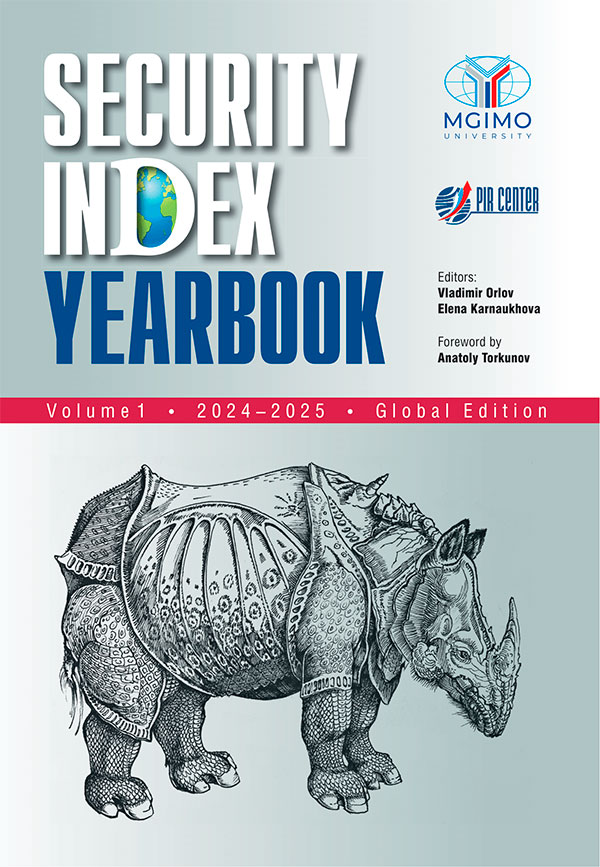... Xinjiang Uyghur Autonomous Region, but their macroeconomic effect is vanishingly small. At the same time, the current level of sanctions allows Washington to solve its political problems in a very limited way. In the foreseeable future, the pressure of US sanctions on China will increase. But a rapid increase in sanctions is unlikely. China’s economy is too large. Carpet bombing it with sanctions will cause significant damage to the US itself. The pendulum of relations between the two countries has swung from cooperation ...
... office in 2016-2020, Donald Trump revealed his support for the increasing containment of the PRC. His anti-Chinese rhetoric was combined with very specific restrictive measures against Beijing. A number of new legal mechanisms have emerged that imply sanctions against China and are enshrined in both federal law and presidential decrees. In other words, the attack on Beijing was carried out both by the executive branch and by Congress. During the presidency of Joe Biden, anti-Chinese policy has been more moderate, but ...
... multipolar world order. Moscow and Beijing’s mutual support in the international arena, growing trade turnover in the face of sanctions, strengthening humanitarian ties, and people-to-people cooperation represent a unique example of the constructive dialogue ... ... between these two truly sovereign states. Further confirming this dynamic was Russian President Vladimir Putin’s visit to China on May 16–17, 2024.
Moscow and Beijing relations managed to move beyond historical grievances, political differences and ...
... West remains firmly committed to disrupt this trend and the Western pressure on Beijing is constantly growing. Not surprisingly, the Chinese private sector is getting increasingly concerned about the scope of the likely negative impact that secondary sanctions might have on their business prospects. After the European Union had introduced its 12
th
package of restrictive measures against Moscow, a number of the leading China’s banks became reluctant to accept dollar payments from Russia; as a result, in March the bilateral trade suffered a mild setback of 2%. With the Chinese export to Russia going down by 14% on the yearly basis (from USD 8,9 billion to USD 7,6 billion),...
... this relates to Russia, against which a significant amount of financial and trade sanctions have been imposed by the United States and its allies. It is Russia today that is most interested in diversifying global finance. Long-term stakeholders include China. So far, sanctions against China are incomparable with restrictions against Russia. In addition, we are talking mainly about American export controls in the field of high technology, and not about financial sanctions. The latter have so far been used only against ...
... DRAM domestic chips and cooperating with Taiwan’s United Microelectronics Corporation (UMC). Due to US sanctions, UMC refused to continue cooperation with Fujian Jinhua, forcing the manufacturer to cease production.
[171]
In 2018, the US imposed sanctions on China’s second largest telecommunications company ZTE. It was banned from buying US technological components for seven years for violating US sanctions against Iran and North Korea. After this decision was announced, ZTE suspended most of its production....
... human rights and ending with sanctions for possible cooperation with Russia. During the presidency of Joe Biden, none of these projects became law, which does not exclude the adoption of those and other bills in the future.
However, the intensity of US sanctions against China is incomparable to the volume of US restrictions on Russia. So, for example, the number of Chinese persons under blocking US financial sanctions can be measured in the dozens, while the number of Russians already exceeds 1,700. This does not include ...
... from receiving advanced chips in any way, because contractors from third countries refused to cooperate with this company, fearing secondary U.S. sanctions. As a result,
Huawei
was forced to sell
Honor,
its smartphone division.
In the meantime, the sanctions imposed on China by the Trump administration were fragmented. A grace period was introduced for most export restrictions, which, in fact, deferred the enforcement of sanctions for a long period. In addition, Trump’s technological crackdown on China was a pinpoint ...
... depreciate. However, in Moscow, apparently, they do not believe in the prospect of any agreements anyway, at least in the near future.
The situation with China is different. Between January 2019 and April 2023, there have been more legislative initiatives on sanctions against China than against Russia—103 versus 99 (again, only those bills that propose specific restrictive measures are counted). Four bills have reached the stage of laws—two on Hong Kong and two on ethnic minorities in the PRC. After the start of the SVO,...
... and many others received it in large volumes. After the end of the Cold War, the “black knights” seemed to have faded into the shadows. Not a single power directly challenged the United States and did not seek at all costs to help countries under sanctions. China carefully built economic relations with the DPRK, Venezuela and Iran, but kept in line with UN Security Council resolutions, avoiding confrontational steps. Russia began to return to the role of the “black knight” only in the mid-2010s. The ...



